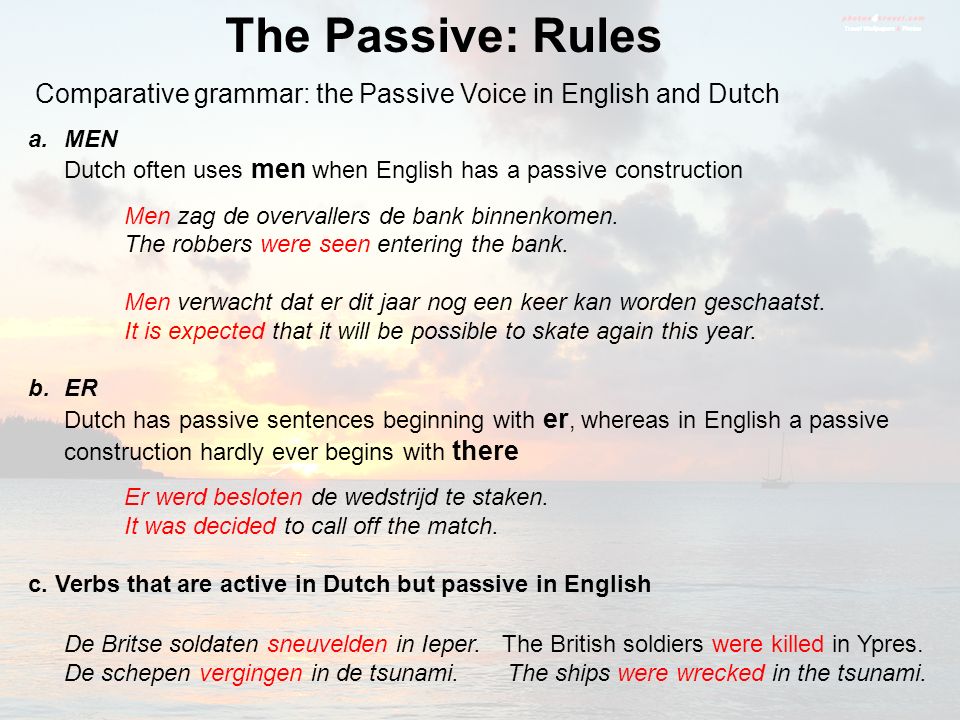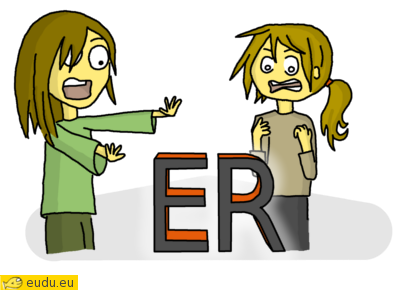The Dutch Passive Voice. A worksheet on the passive construction, the tenses in the passive and the impersonal passive.
The Dutch Passive Voice
Formation of the passive in Dutch
In Dutch, to form the passive voice ‘zijn‘ and ‘worden‘ are used.
Zijn (to be) and worden (to become) are irregular verbs.
The past participle is used to form the passive, like in English.
There is, however, one important difference. Just compare the English and Dutch phrases below.
| English | Auxiliary verb | Dutch | Auxiliary verb |
| My hair is washed | to be | Mijn haar wordt gewassen | worden |
| My hair was washed | to be | Mijn haar werd gewassen | worden |
| My hair has been washed | to be | Mijn haar is gewassen | zijn |
| My hair had been washed | to be | Mijn haar was gewassen | zijn |
Note that in English, they use ‘is’ and ‘was’ for the simple tense, whereas in Dutch, they use the exact same words for the perfect tense.
In English, they use the same verb for both the simple and the perfect tenses (to be). In the examples above, they used ‘to be’. In Dutch, on the other hand, they use two different verbs: worden and zijn.
Worden and zijn
Worden is used if the event is still going on at this particular moment. In English they would use the simple tense of to be, to become or, sometimes, to get.
Zijn is used when we want to express that an event has already occurred or been done (perfect tense). In English, they would use the perfect tense of ‘to be’.


Content
Level
This lesson can be used for adults from intermediate to advanced levels.
Aim
The aim of this lesson is to learn the passive in Dutch
Preparation
First print out the worksheet, then copy a worksheet for each student in the class.
Procedure
Go through the grammar and exercises together.








what are the answers to the exercises given in de pdf :)?
I’m sorry but we don’t have them. That’s all we have.